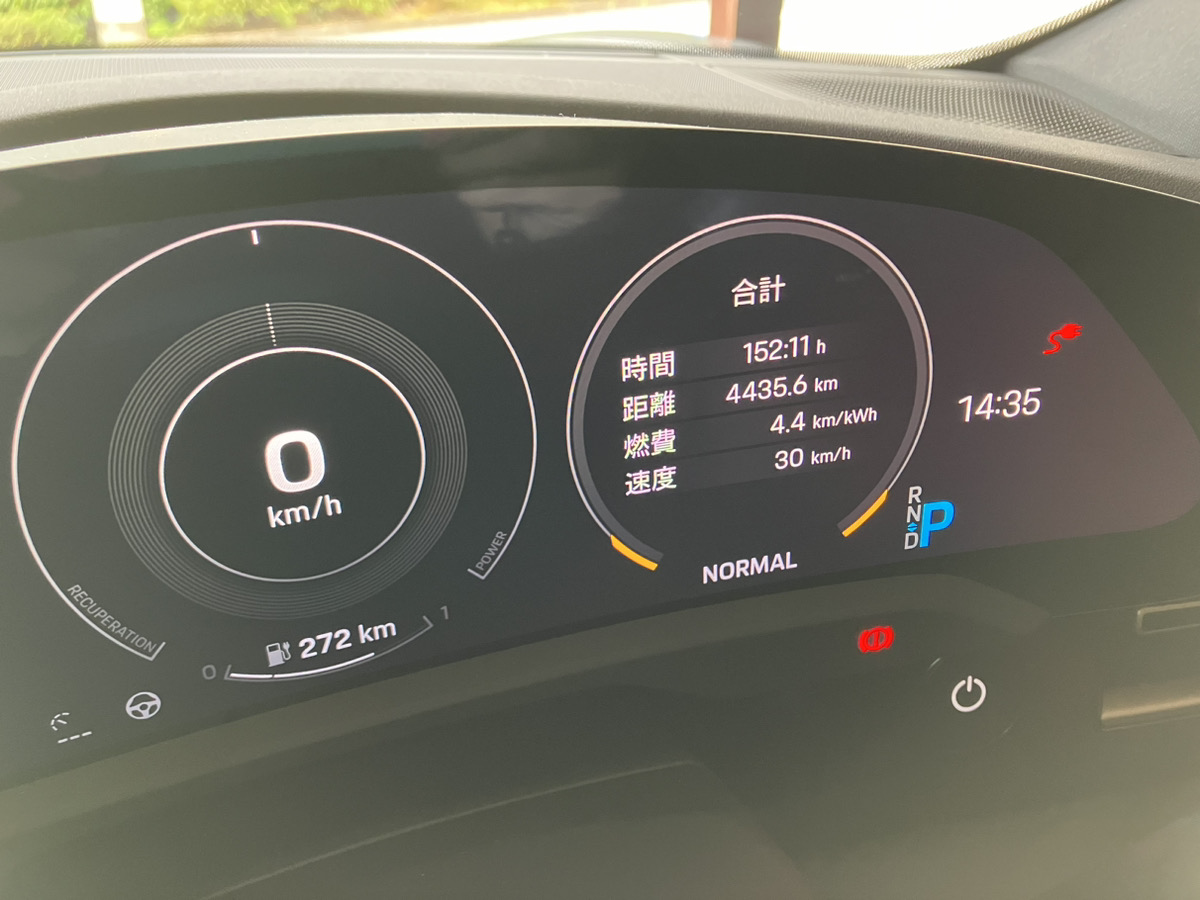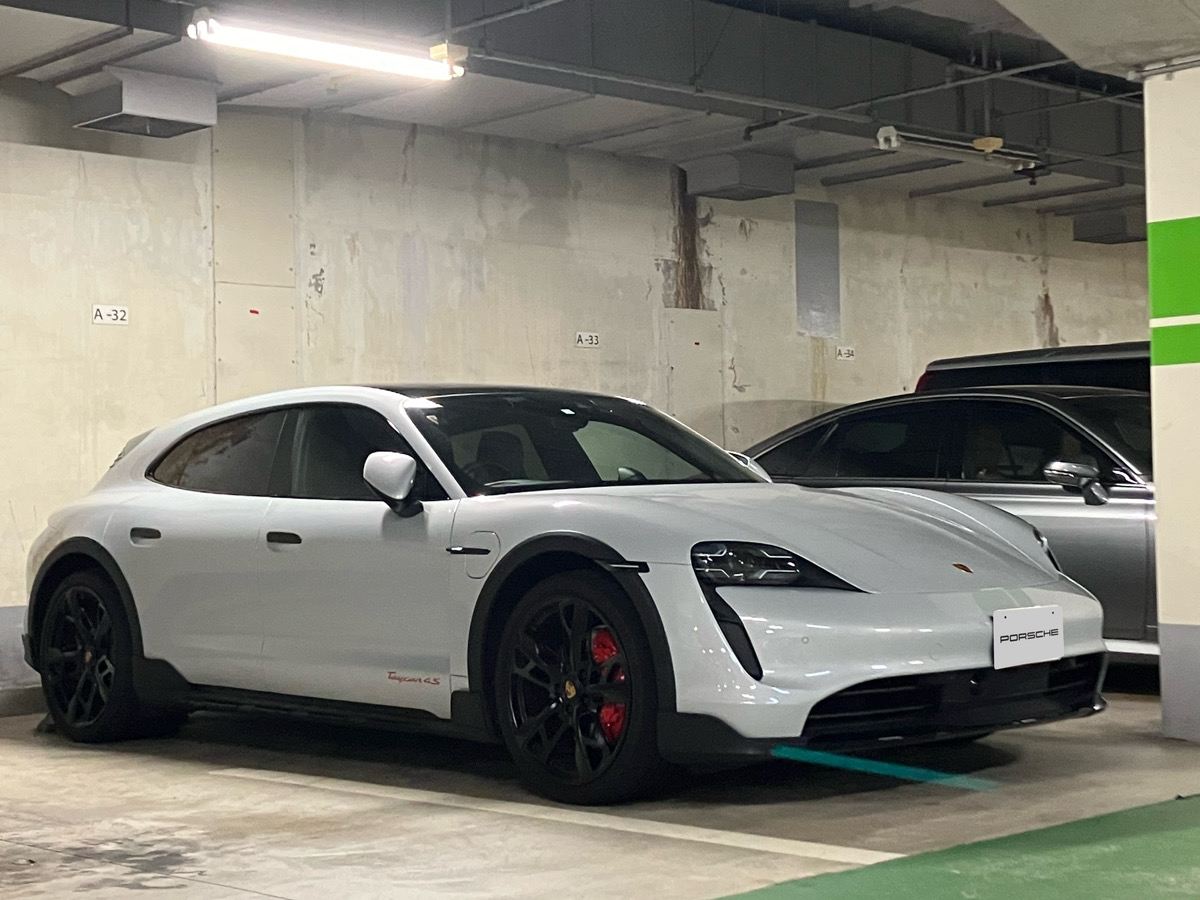7 Months with the Taycan: What’s the Real Energy Efficiency? How Far Can You Go on a Full Charge?
公開日:2024.09.01

It was at the end of January this year that the Porsche Taycan 4S Cross Turismo arrived at our home.
I bought it used, and at that time the mileage was about 8,030 km, but now it’s 14,393 km. I’ve driven about 6,000 km in 7 months. (I drive it every day, but since I rarely take long trips, the distance hasn’t increased much.)
This time, based on actual ownership experience, I’d like to share some real data about the Taycan’s energy efficiency and how far it can go on a full charge.
コンテンツ
Taycan Energy Efficiency from February to August
Energy efficiency (km/kWh) indicates how many kilometers an electric vehicle can travel using one kilowatt-hour (kWh) of electricity. This is equivalent to “fuel efficiency” in a gasoline car, and a higher number means the car can travel farther on less electricity.
So, below is the Taycan’s driving data from February through August. But first, a disclaimer: these numbers are taken from Porsche’s app, but for some reason not all data is reflected. For example, although I drove round-trip from home to Fuji Speedway in March, that data isn’t included (March’s recorded distance is only 87 km), and only 869 km of the 7-month driving distance is captured.
Maybe I set something up incorrectly…
Anyway, here it is:
■ February
Total driving time: 223 minutes
Total distance: 96 km
Average energy efficiency: 3.0 km/kWh
■ March
Total driving time: 299 minutes (about 5 hours)
Total distance: 87 km
Average energy efficiency: 6.8 km/kWh
*For some reason, there was a day with an energy efficiency of 33.3 km/kWh. Maybe I was going downhill a lot…*
■ April
Total driving time: 260 minutes (about 4.3 hours)
Total distance: 74 km
Average energy efficiency: 3.4 km/kWh
■ May
Total driving time: 591 minutes (about 9.9 hours)
Total distance: 190 km
Average energy efficiency: 3.8 km/kWh
■ June
Total driving time: 551 minutes (about 9.2 hours)
Total distance: 151 km
Average energy efficiency: 7.5 km/kWh
*For some reason, there was a day with an energy efficiency of 111.1 km/kWh. Even considering downhill driving…*
■ July
Total driving time: 346 minutes (about 5.8 hours)
Total distance: 47 km
Average energy efficiency: 4.2 km/kWh
■ August
Total driving time: 647 minutes (about 10.8 hours)
Total distance: 224 km
Average energy efficiency: 3.0 km/kWh
That’s the summary.
According to this, the average energy efficiency is about 3.39 km/kWh. The unusually high values in March and June (33.3 km/kWh and 111.1 km/kWh) may be measurement errors.
That said, energy efficiency is influenced by factors like distance driven, driving style, weather, and road conditions, so it’s hard to draw firm conclusions.
Next, I checked the trip data inside the Taycan’s driver seat display (it seems it was reset once, so this isn’t the total data since delivery):
Time: 152.11 hours
Distance: 4,435.6 km
Energy efficiency: 4.4 km/kWh

The trip data inside the Taycan seems more reliable than the app data, so the energy efficiency is probably 4.4 km/kWh.
The Taycan’s total battery capacity is about 90 kWh, so on a full charge you can expect to drive roughly 400 km.
Driving Around 200 km Daily Is No Problem
Whether you see “400 km on a full charge” as a lot or a little depends on the person, but in reality, very few people in Japan drive that far every day. So if you can go this far on a full charge, it’s more than enough for daily life and occasional medium-distance drives (though having a home charging setup is preferable).
For me, even when I take longer trips for work, it’s usually about 150 km. Just recently, I drove round-trip to Kyoto starting with 85% charge (I usually keep it at 85% instead of 100% to preserve battery life), drove about 150 km, and when I got home the charge was at 45%.
Then, I charged from 10 PM to 8 AM the next morning, and the battery was back up to 72%.
If it recovers this much overnight, there’s no problem at all. Even without a fast charger at home, a regular 200V charger is more than enough.

Before owning an electric car, I worried about range anxiety and the scarcity of charging spots, but in reality, there’s no problem at all. In fact, it’s more convenient because I don’t have to go to gas stations anymore and can charge at home as easily as charging my iPhone.
I sometimes think I should have switched to an electric car much earlier… (laughs)
I’ll continue sharing my impressions and experiences with the Taycan in future articles.
このブログが気に入ったらフォローしてね!


Comment ( 0 )
Trackbacks are closed.
No comments yet.